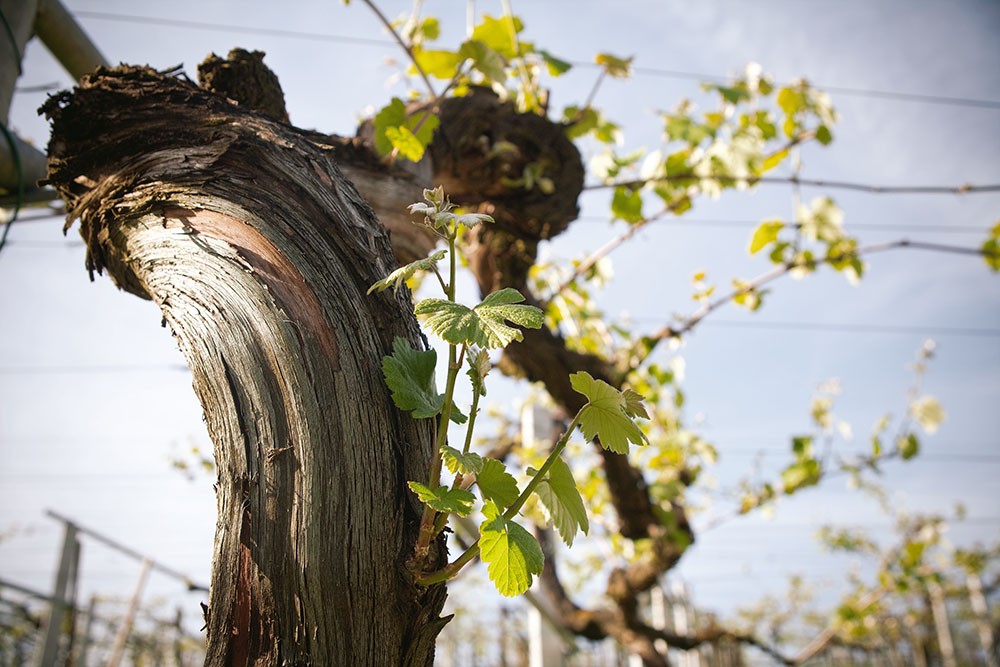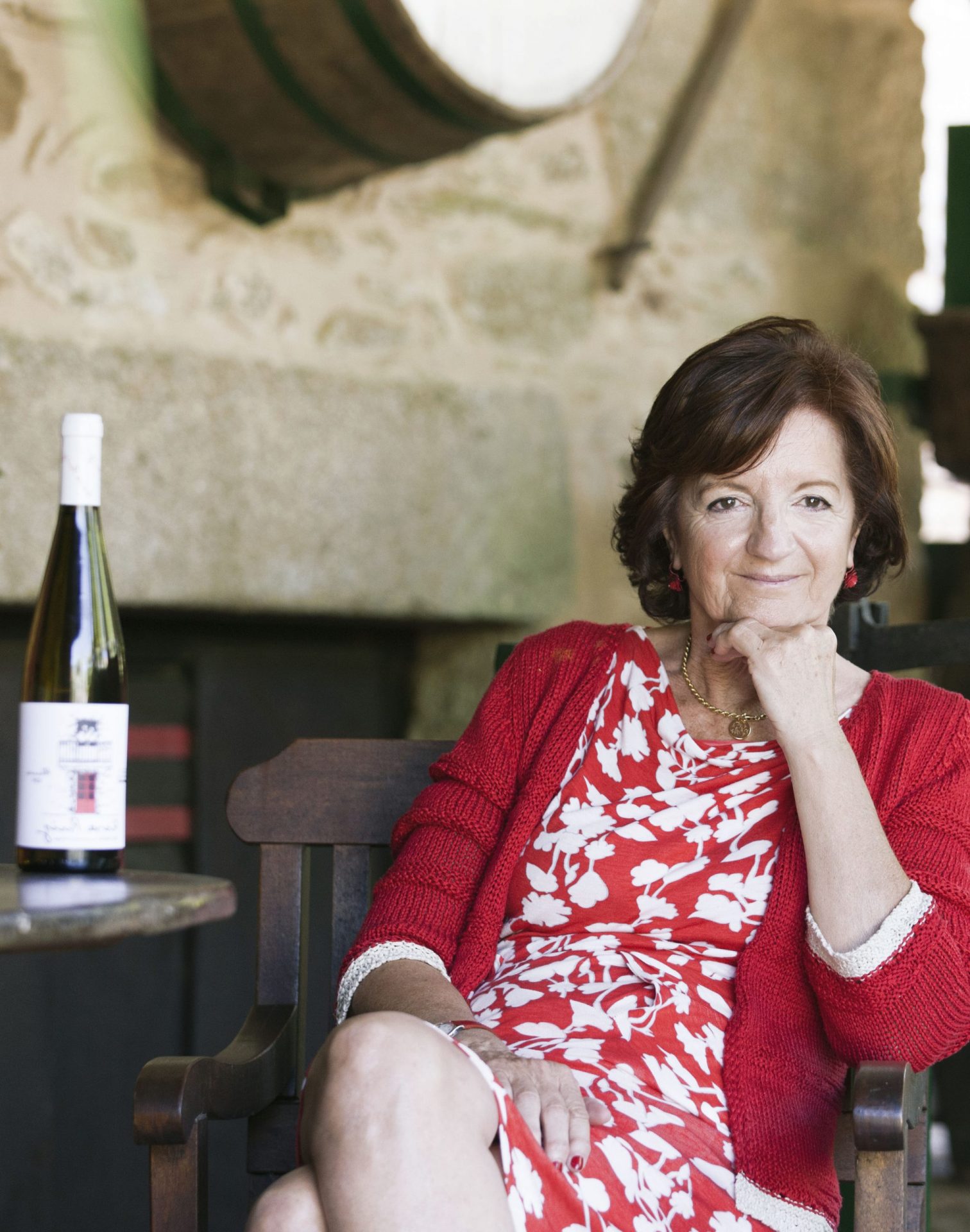
Albariño is defining Galicia and beyond
By Tim Pawsey
Few wine regions in the world are dependent on — and renowned for — one sole variety. However, in northwest Spain, Rías Baixas is very definitely one such region.
Here, Albariño — Galicia’s flagship variety — has emerged as the only grape of consequence and it accounts for well over 90 percent of the plantings.
Galicia is markedly different from the rest of Spain in just about every way imaginable. The name Rías Baixas derives, quite literally, from “the low rivers,” in reference to the four large inlets and deep estuaries that define the region. While most of Spain is warm, dry and frequently scorching, Galicia is cool, damp and often doused by Atlantic storms. It’s separated from the rest of the country by the ancient Galicean Massif, a mainly granite formation that runs north to south.
Even its architecture is different, with buildings characterized by granite and stonework more reminiscent of County Cork than most of the country’s more heated interior. Noticeable too is a preponderance of Gaelic crosses at every turn. Galicia’s westernmost point is Cape Finisterre, meaning “the end of the earth.” But it’s by no means the only point so named. There are quite a few around the globe. In this case, it marks the northwest extremity of the European continent — and a major point of contact.
It’s no surprise that the region’s history and peoples have more in common with their seagoing neighbours, such as the Irish and the Cornish people from southwest of England. They’re due north of Galicia, on trading routes that date back millennia, long before today’s political boundaries were forged. It’s also no coincidence that the traditional instrument here, the Gaita, is almost identical to Scottish and Irish bagpipes. And Galicians speak and write their own language — Gallego — which bears an uncanny resemblance to Gaelic.
All of this makes it easier to understand not only the importance of Albariño but also why it’s so distinct compared to other Spanish wines — which, in most people’s minds, tend be red anyway (and if not red, then, possibly, sherry).
Albariño’s star wasn’t always in the ascent. Prior to the 1980s, the grape was often grown wild — sometimes winding its way around trees — and usually just blended in with other varieties to make, not surprisingly, unremarkable wines. The same was true south of the Miño River, in Portugal, where Alvarinho was equally prolific, and similarly uninspiring.
With increased interest in Albariño around the world, a new generation of growers felt strongly that the variety deserved more than to just be blended away as jug wine. They went to work making distinctive wines, which began to receive recognition in international wine circles. Their efforts led to the creation of the Denominación Específica Albariño in 1980, formalized as Denominación de Origen (DO) Rías Baixas under the EU in 1988. Then came the delineation of three sub-regions within Pontevedra province (Val do Salnés, Condado do Tea and O Rosal), followed by Soutomaior (1996) and Ribeira do Ulla (2000).
The major thrust of the DO regulations requires that only Albariño grapes be used, which had the eventual effect of doing away with blended wines, thus placing the variety firmly on the road to success. That wasn’t the case, however, in Portugal, which continued to use Alvarinho primarily for Vinho Verde, except in Monçao and Melgaço, on the south shore of the Miño, where it too is made as an increasingly recognized varietal wine.

Like so many grapes, Albariño’s true origins aren’t clear. Some have suggested a link to Riesling or to Petit Manseng, among others. Most likely, however, it was introduced in the 12th Century by French Cluny monks at the Monastery of Santa María de Armenteira, not far from historic Pontevedra, on the Camino Trail. Although, possibly, it’s been here even longer, as others point to evidence of its cultivation dating back over a thousand years.
Albariño is notable for its stone fruit and citrus aromatics and flavours, often with mineral undertones, and frequently showing a subtle hint of marine air or even quiet salinity, all of which add up to make it a shoo-in to pair with Galicia’s abundance of fresh seafood, which is arguably some of the best anywhere in the world. There are few better ways to appreciate the grape than served in an oceanside café, alongside a lunch of pulpo (“octopus”), whole fish usually prepared two ways (grilled and baked) or platters of mussels, razor clams, oysters, goose barnacles and more. For each and every one, Albariño makes a perfect match.
The grape’s success and proliferation over the years hails from its ability to ripen and thrive in the moist Atlantic air that typifies Galicia and Rías Baixas. Another important distinction: it’s traditionally trellised on pergolas, which elevates the vines well off the ground to thwart mildew and introduce circulation. They’re also made of cement — which, importantly, doesn’t rot — and make the vines more accessible for pruning, thinning and harvesting, and are usually high enough to permit a tractor to pass underneath.
Even though the recent arrival of larger plantings, especially more inland, has seen a shift towards “modern” typical post-and-wire trellis systems, there’s still plenty of support for — and belief in — the original system. The pergola also fits well with the idea of a more balanced ecosystem. Small holders of, say under an acre, find additional uses for the ground below, such as raising chickens. Their estimated numbers range as high as 20,000, with 1,000 supplying Martín Códax alone. In much of Rías Baixas, the pergola still rules, and for good reason.
Albariño’s emergence has not gone unnoticed elsewhere, especially in the New World, where plantings have taken hold in several regions. What’s driving the interest varies. Several New Zealand producers, including Villa Maria, Kono, Neudorf, Matua, Sileni and others, now produce single-variety Albariño bottlings. No doubt it’s all part of a move that finds producers looking for alternatives to Sauvignon Blanc.
Luminary and Master of Wine Bob Campbell, writing on TheRealReview.com, notes “In the past four years, the fastest-growing grape variety in New Zealand is Albariño. This Spanish grape variety has grown a whopping 27.2 percent in that time. Chenin blanc is in second place with an 11.8 percent growth rate. The crisp acidity, potentially rich texture and bright floral and citrus flavours of Albariño make it a great match for most seafood dishes. I think it’s a winner ...” Indeed, with its wide array of maritime-influenced viticulture, New Zealand would seem to be a natural second home for Albariño.
On the other side of the southern hemisphere, Uruguay’s Bodega Garzón is also doing well with Abariño, in a style that mirrors its Galician counterpart more closely than some others. It was the first variety planted here, as consultant Alberto Antonini recognized similarities in the oceanside terroir.
Albariño is also becoming more common in North America, with plantings stretching from California (including in Santa Ynez, Clarksburg, Napa, Edna Valley and Los Carneros) north to Oregon’s Umpqua Valley (where it was introduced by Abacela some 20 years ago), as well as in Willamette, and also to the Okanagan. Here, its early adopters include Terravista Vineyards (on the Naramata Bench), where Bob and Senka Tennant planted the variety in 2008. They were followed more recently by Stag’s Hollow, which grows Albariño in its Shuttleworth Creek (Okanagan Falls) vineyard.
Stag’s Hollow winemaker Keira LeFranc says the variety grows beautifully, so much so that it’s important to keep the vigour in check. “Stylistically it leans towards a fuller, riper style, with tension and acidity. But what I love about it is the texture that the concrete [fermenter] brings to the wine,” says LeFranc.
No doubt, as more winemakers discover Albariño’s potential and viticulturists experiment accordingly, in time, it can only benefit the home team. And help place Galicia far more obviously and very deservedly on the world wine map.

The Notes
Bodega Garzón Single Vineyard Albariño 2017, Uruguay ($31)
Brilliant gold in glass, vibrant citrus and tropical aromas with some schisty hints before a lush and rounded palate of juicy peach and pineapple with a touch of salinity.
Luzada Val do Salnes Albariño 2017, Rías Baixas ($16)
Forward citrus and floral notes with some orchard fruit before a bright, juicy palate with peach and zesty notes to close.
Stag’s Hollow Albariño 2018, Okanagan Falls ($21)
Citrus and tropical aromas with stone fruit and lemon curd precede a palate of bright mango and peach flavours, quite mouth-filling with some leesy notes supported by juicy acidity through a mineral, zesty finish.
Atlantis Albariño 2018, Rías Baixas ($21)
From Condado do Tea, above the Miño, forward orchard and tropical notes, pineapple and more tropical hints on the palate with crisp acidity and a clean finish.
5 Notable Producers
Bodegas Martín Códax
Long-running, leading producer with a strong cultural component; established in 1986; named for a famous Galician troubadour.
Pazo de Señorans
A historic estate turned winery and vineyards, whose owners were instrumental in establishing DO Rías Baixas. Also produces Orujo Albariño spirit.
Benito Santos
Another of the original producers who played a key role in setting up the DO. Estate-fruit grown on pergolas in mineral soils.
Bodegas Terras Gauda
Major producer established in O Rosal, producing since 1990, with exports to over 45 countries.
Santiago Ruiz
Named for its founder, who’s widely credited with truly establishing Albariño as the regional variety in the 1980s. The bodega founded by his grandfather dates from 1860.
More like this...
- There’s Something About Etna
- Carne en su Jugo
- Aguachile & Tostadas de Maíz
- An Unexpected Eating Guide to North Goa
- Germany Now
- Terroir Domesticated
- Ginger Beef
- Dan Dan Lasagna
- A Local’s Guide to Austin TX
- The Rise of Bottle Shops in Ontario
- Chef Profile: Helen Nguyen
- Pan-Roasted Cabbage
- Crispy Smoked Tofu
- Shifting Perspectives: Is Ageing Wine a Thing of the Past?
- Tasting Climate Change and Thirsty to Know More
